This Issue
(Volume 4 / Issue 3)
• CIM MER Society Member’s Corner p. 2-3
- One CIM Community
- Current CIM MER Objectives
• Calendar of CIM MER Upcoming Events p. 4
• CIM MEMO 2023 Technical Presentations p. 5
• Stories of Interest to MER Society Members p. 6–11
- “Lamaque mine BEV Truck”
- “Beyond the end of battery life”
• CIM MER Society AWARDS p. 12
McParland Memorial Award
• CIM MER Society SCHOLARSHIPS p. 13
J.D. "Pat" Patterson Memorial Scholarship
• CIM Journal & Paper Submissions p. 14
• MER Abstracts from Latest articles p. 15–17
- “Industrial applications of digital twin technology in the mining sector: An overview”

- “ Digital technologies for energy efficiency and decarbonization in mining”
- “Control of friction hoist head rope tensions revisited”
- “Design method for overwind arrestors”
• MEMORIAL - Donation to Maison McCulloch Hospice in Sudbury
• CIM MER Executive & Newsletter Committees


MER Today
MER Today is our digital publication covering CIM MER Society news and improvements in Maintenance, Engineering and Reliability in mining.

CIM/ICM StrategicandOperational Priorities
2023–Q1 2024 One CIM Community MER Society Engagement


1 | MER Today– Fall 2023 MERToday–Fall2023
One CIM Community MER Society Engagement




On July 24, 2023, from 3:00 to 4:30 pm, Michael Cinnamond, CIM President 2023–2024 and Angela Hamlyn, CIM Executive Director, met with MERS Executives to outline CIM’ s Strategic and Operational Priorities for 2023–Q1 2024 and the Strategic Plan for 2024 and beyond, setting the stage for the future.



Also at the meeting was Martin Provencher, MERS Chair, who presented MERS at a Glance and Priority Plans for 2023.
Open discussions followed, resulting in a much stronger One CIM Community.

2 | MER Today– Fall 2023
CURRENT CIM MER OBJECTIVES


- provide a forum for Society members to share their knowledge and seek information on maintenance and engineering topics within the Society, throughout the rest of CIM, and with external bodies;
- promote the improvement of maintenance and engineering standards through peer review of technical papers and public and private industry presentations of technology and best practice topics;
- encourage individuals to join the mining industry through scholarship awards
- recognize engineering and maintenance excellence, participation, and contribution through awards;


- serve as a resource and support body to mine operating personnel, consulting engineers and designers, and suppliers of mine equipment; and
- improve safety and minimize risks through the application of engineering principles and maintenance practice in the mining industry by promoting the adoption of approved methods and devices.
Eng. Disciplines covered by the Society:
The engineering disciplines covered by the Society are Mechanical, Civil, Electrical, Electronics, Instrumentation, Chemical, Computer Sciences, Material Sciences, Manufacturing, and related disciplines
Article source: https://societies.cim.org/mers/en/
3 | MER Today– Fall 2023
CalendarofCIMMERUpcomingEvents
CIM MEMO 2023
Maintenance, Engineering and Reliability/Mine Operators Conference


September 17–20,2023,Saskatoon,Saskatchewan
Save the Date!
CIM Health and Safety Society Conference

October 6–8, 2024, Toronto, Ontario |

4 | MER Today– Fall 2023
CIM MEMO 2023
Sep 17
20,2023,Saskatoon,Saskatchewan

Technical Presentations
Monday Sep 18, 2023
10:30–12:10
Maintenance Planning

Mine Tailings
Mining Innovation
Mining and Stress
13:30–15:10
Condition Monitoring
Ground Control
Intelligent Mining

Mine Water Management
15:30–16:45
Case Studies
Electrification and Automation
Hydraulics
CONFERENCE CO-CHAIRS
Paul Labbé
Brian Fagan
CIM Contacts
Marie Tota, Conference Planner
1-514-939-2710 ext. 1330
Nadia Bakka, Sales Manager, Exhibition & Sponsorship
1-514-939-2710 ext. 1360
Tuesday Sep 19, 2023
10:30–12:10
Emissions and Dust
Indigenous Engagement
Mine Safety and Environment
Other Material Handling
13:30–15:10
Granular Material Handling
Human Resources
Project Development
15:30–16:20
Mining Culture
15:30–16:45
Common Maintenance Issues
Saskatchewan in Development
5 | MER Today– Fall 2023
–
Ryan Bergen, Editor-in-chief CIM Magazine


Eldorado Gold’s Lamaque mine receives its first BEV truck
Lamaque mine becomes the first in Quebec to integrate the Sandvik TH550B into its fleet
 By Alice Martin, June 20, 2023
By Alice Martin, June 20, 2023
Eldorado Gold Québec has added its first battery-electric truck to its fleet at the Lamaque underground gold mine in Val-d’Or, Québec. The TH550B 50-tonne truck from Sandvik Mining and Rock Solutions is the first of two BEV trucks to be assembled and delivered in Canada from the Sandvik factory in Winnipeg. The second will be delivered to Eldorado Gold Québec sometime in the fall.
“Eldorado Gold is excited to take this next step towards electrifying our mining operations,” said George Burns, president and CEO of Eldorado Gold Corporation, in a June 16 press release from Sandvik.
Eldorado Gold stated in its own June 15 press release published in French that it is the first mining company in Québec to integrate a Sandvik TH550B BEV truck into its fleet.

6 | MER Today– Fall 2023
The Sandvik TH550B battery electric truck has a 50-tonne loading capacity and will enter its testing phase at the Lamaque underground mine over the next few weeks. Courtesy of Sandvik Mining and Rock Solutions.
The first TH550B truck will enter its testing phase at the Lamaque mine over the next few weeks, during which employees will be trained on how to operate the truck.
According to Eldorado Gold Québec, once both trucks are fully operational, it expects a reduction in greenhouse gas (GHG) emissions of 1,700 tonnes of CO2 annually. The Lamaque mine, partly due to being powered by hydroelectricity, is one of the lowest GHG-emitting gold mines in the world, the company said in the release.
The Lamaque mine has been in production since 2019 and is one of four mines the company currently operates. According to Eldorado’s 2022 sustainability report, Lamaque generated 0.11 tonnes of scope 1 and 2 GHG emissions per ounce of gold produced, while the average across its operations was 0.44 tonnes per ounce.
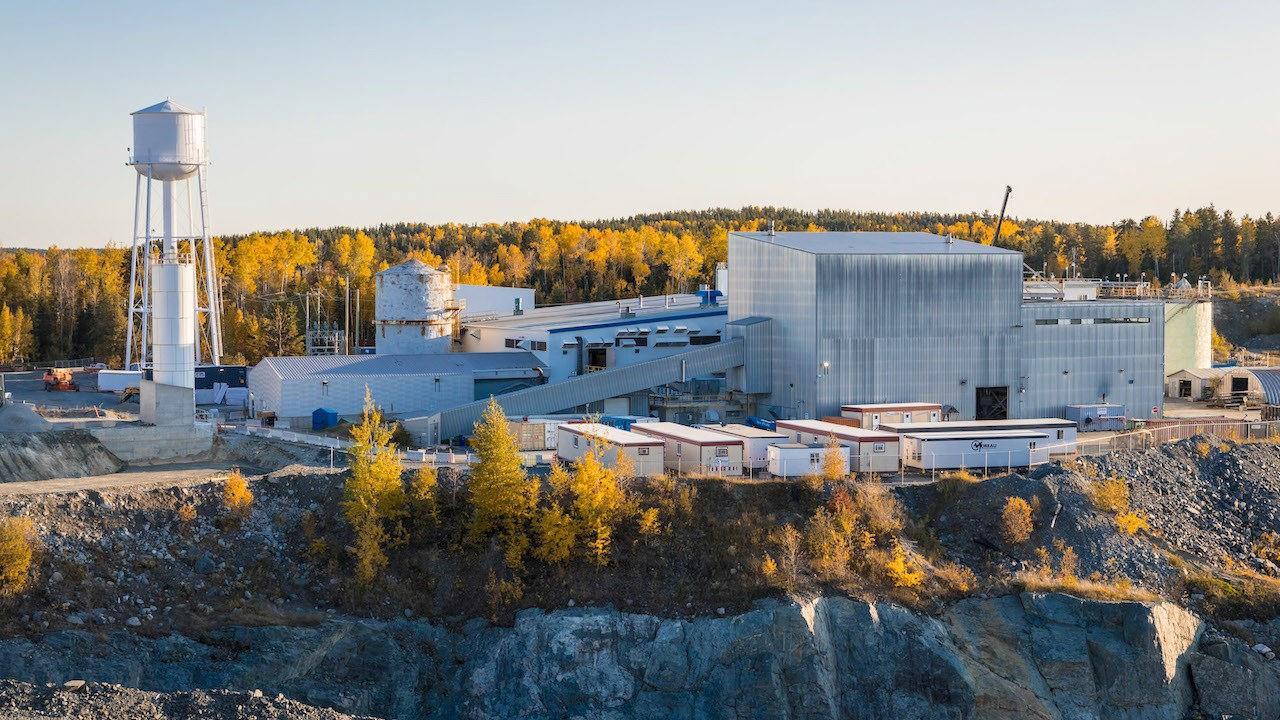

Eldorado Gold, Lamaque mine
Eldorado Gold to reopen Lamaque mine - MINING.COM
7 | MER Today– Fall 2023
Beyond the end of battery life
Strategies are evolving to manage the life and afterlife of mining BEVs
 By Mehanaz Yakub, December 23, 2021
By Mehanaz Yakub, December 23, 2021
This Rokion 4 Passenger R100 is just one of the fleet of battery electric vehicles Vale has deployed in its Creighton mine. Courtesy of Rokion
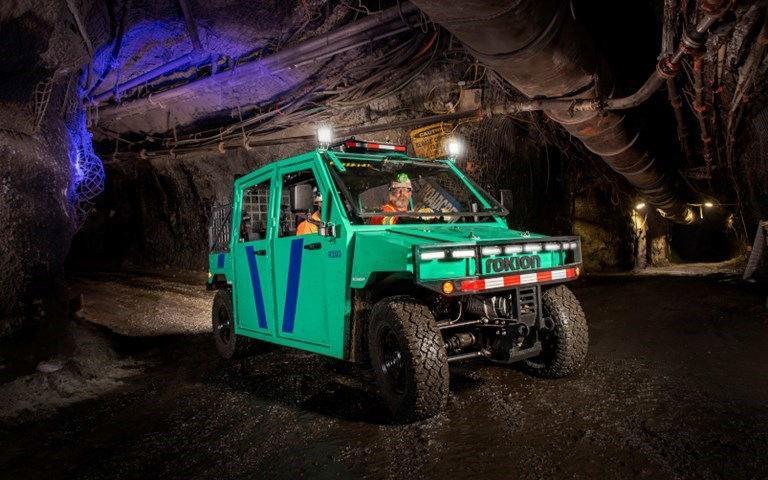
Electrification is shaking up several industries around the world, and Canada’s mining sector is no exception. Mining companies are exploring ways to electrify their fleets, but as the use of battery electric vehicles (BEVs) grows, so will the piles of lithiumion batteries that were once used to power them. As with traditional lead-acid batteries, there are highvalue metals that can be safely recovered, recycled, and repurposed.
Planning forend-of-life

Currently, Vale has 32 BEVs operating at its underground mines, and even more are expected to go online in a few months.
The company is still at the early stages of its BEV
Ryan Bergen, Editor-in-chief CIM Magazine

adoption journey, with its oldest batteries only a few years old and no serious battery performance challenges to date.
But with all batteries, there is a limited life that needs to be considered. Over time, their charging capacity will inevitably degrade as part of the natural wear per charge of a battery’s cell.
“After a battery has crossed that 80% threshold of its initial capacity, the battery cell is still usable and can still be used under quite low-energy capacity values. But at that point, whilst you might get thousands of cycles for the first 20% of the capacity, you might only get 200 for the next 20% of the capacity loss,” explained William Hughes, chief engineer at Rokion, a Saskatchewan-based mining vehicles manufacturer.
As a result, Vale is keeping a close eye on the performance of its electric fleets.
8 | MER Today– Fall 2023
“From an operational perspective, battery performance needs to be considered in a way similar to how we manage the health of traditional combustion engines and drivetrains,” said Alex Mulloy of Vale’s technology and innovation team, managing Vale’s green energy vehicle program. “Maintaining appropriate levels of vehicle availability will require batteries to be monitored, maintained, and replaced as their capacity begins to decline.”
Vale is also entering into battery lease, as well as capital purchase agreements with a number of original equipment manufacturers (OEMs) to provide support in managing its battery inventory and end-of-life battery recycling.
“Through learning from our industry partners, we understand that sustainable and responsible end-oflife battery management can and will be an important aspect of battery vehicle integration,” said Mulloy. “We are committed to responsibly managing all of our batteries when they are no longer viable for heavy-equipment use.”
Battery leasing and second-life applications

Vale’s Creighton nickel mine in Sudbury is home to its largest collection of what it describes as greenenergy vehicles (GEVs). As part of a pilot program, the company is going deeper underground into extreme heat and ventilation-constrained areas of the mine. To better understand the benefits of GEV technology for the program, Vale is switching out its diesel-powered haulage, loading, and utility vehicles
with battery-powered ones, supplied by a range of OEMs, including Epiroc and Rokion.
With Epiroc, Vale entered into a batteries-as-aservice agreement (BaaS). In 2019, the OEM began providing BaaS as an approach to rent out batteries to its customers for a monthly fee. The bill includes a kilowatt per hour charge, quarterly service visits, remote monitoring, and a warranty for the costs, repairs, and parts of the battery, according to Shawn Samuels, product manager at Epiroc’s Rocvolt Canada division.
Under Epiroc’s business model, once a battery’s state of charge drops and is no longer suitable for mining vehicles, the company sends it to a secondary application, where the remaining energy-storage capabilities in the battery can be used for less intensive, lower energy output uses. According to Samuels, Epiroc will use its old batteries for energy storage usage applications such as solar panels or for peak shaving, which is where energy can be stored during off-peak hours and used during peak hours to mitigate costs.
“There are different secondary applications that are happening right now, and I think there are lots more ideas out there that are coming,” said Samuels.
9 | MER Today– Fall 2023
Batterychemistry
Another OEM partner of Vale’s is Rokion, the BEV manufacturing division of Prairie Machine. All of Rokion’s mining trucks use lithium iron phosphate (LiFePO4) batteries, which are assembled, programmed, and looked after in-house. The batteries’ cells which are made up of a positively and negatively charged cathode and anode material, linked together with an electrolyte are purchased from various vendors.
“We use LiFePO4 cells largely because those cells are the safest chemistry choice,” said Hughes. “LiFePO4 cells run very cool, they are extremely efficient, and they have a very high thermal-runaway threshold so they are, in our opinion, the lowest risk cells to use in an underground vehicle since it is extremely important that there are no fires underground [because] the consequences would be quite horrific.”
Once the battery falls below 80% of its initial capacity or when it can no longer accomplish its designated missions in a mine, Rokion either sells the customer a new battery as a replacement or takes the existing battery, remanufactures it, and returns it to the client.
“What we’ll do is we’ll bring the battery back to Rokion, we’ll remove the cells, clean everything up, and put new fresh cells in, balance it all up, and put it back in the vehicle. So that cost is considerably less than a new battery as it turns into an operating cost per hour,” said Hughes.
Hughes added that Rokion sends the old battery cells to a local disposal company that has the technology to recycle parts of them.
Developing a recycling process

The first step in the process of recycling batteries is relatively straightforward, according to JeanChristophe Lambert, business development manager at Lithion, a Montreal-based company. Lithion has been operating since February 2020 and offers expertise in recycling batteries from a variety of battery applications with assorted chemistries. At the start of the recycling process, a battery’s pack is first dismantled to its cluster of modules. The modules go through a shredder that separates flakes of aluminum, iron, copper, and plastic from what industry refers to as the “black mass” the mineral contents of the cathode and anode materials that form a battery.
In the second stage, things get a little trickier as the materials in the black mass are recovered either through a pyrometallurgy or hydrometallurgy process.
“Everyone has their different ways of doing it. And it depends on what people’s goals are when it comes to recovering these battery metals. Some people will say they want maximum recycling... while others are thinking about good economics,” said David Anonychuk, global vice-president, metallurgy and consulting at SGS.
10 | MER Today– Fall 2023
Through the pyrometallurgy technique, the black mass is put through a smelter process and a refinery, where slags of nickel and cobalt metals can be recovered and sold as a commodity.
“The problem with that is when you’re using the shredding and pyrometallurgy combination, your recovery rate is probably between 40 and 50% of the initial battery,” said Lambert. “You’re also not recovering graphite and you’re not recovering lithium, so you’re really losing a lot of components along the way.”
Instead, Lithion uses the less common hydrometallurgy process and claims a recovery rate of 95% In that process, the black mass is put into a solution and its materials get separated into a suitable form and purity in order to be reused by the battery manufacturing industry as part of a circulareconomy approach.
Looking to the future, Lambert believes battery recycling technologies will be a very significant topic around the world.
“In the case of the batteries, they’re touching two of the biggest topics in the energy sector right now, which are the use of renewable energy and electrification of transportation,” said Lambert.
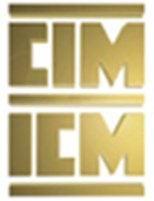
By the end of 2030, there will be around 200 battery megafactories. This number includes ones that are currently operating, are now under construction, or have been announced, added Anonychuk.
“Now, a lot of companies are asking themselves:
‘How do we play on the recycling side?’ All these batteries are going to be produced and it’s going to take a while for them to get to the end of their useful life in about 10 or 15 years... But from a manufacturer’s point of view, they are already going to have manufacturing scrap produced that they need to recycle today... so companies will need an end-oflife battery plan because it won’t be something they can continue to ignore in the short term.”

11 | MER Today– Fall 2023
CIM MER Society AWARDS
McParland Memorial Award
For Excellence in Maintenance, Engineering and Reliability
CIM Distinguished Service Medal
For meritorious service to the Institute or the mineral industry
CIM Distinguished Lecturers
For accomplishments in scientific, technical, management, or educational activities related to the minerals industry
CIM Fellowship
For outstanding continuous contributions to CIM and/or the mining, metallurgical, and petroleum industries

The CIM MER Graduate Student Research Excellence Award
The aim of the award is to provide a platform for the dissemination of innovative thinking of benefit to the mining industry from the Society’s brightest new minds and to provide a means to allow such contributions to be recognised.
McParland MemorialAward
For excellence in maintenance engineering and reliability in the minerals industry
Donald J. McParland was a founding member of the Mechanical-Electrical Division and its first Chairman. After a short and distinguished period with Noranda and Rio Algom, he joined the Brinco organization and eventually became its president and chief executive officer, primarily responsible for the design and construction of the giant Churchill Falls project. His brilliant career was tragically ended in 1969 at the age of forty in an airplane crash at Labrador City. Mr. McParland was engaged in a tour as a CIM Distinguished Lecturer at the time, concentrating his efforts on the small isolated Branches of the Institute. The MechanicalElectrical Division was established by Mr. McParland and his CIM associates in 1961 to provide a forum for the people and the technology in the field, which had become such a vital part of the mining industry, filling a recognized need. It seemed totally appropriate that a suitable award, under the auspices of the M-E Division, should be established and that it should commemorate the memory of the founding Chairman and a most remarkable Canadian engineer. Approval for the award was given by the CIM Council in 1972 and sponsorship

12 | MER Today– Fall 2023
CIM MER Society SCHOLARSHIPS


1. CENTENNIAL SCHOLARSHIP
2. KEN HILDEBRANT MEMORIAL SCHOLARSHIP
3. EDWARD MELVILLE (Ed) PATTON MEMORIAL SCHOLARSHIP
4. J.D. "PAT" PATTERSON MEMORIAL SCHOLARSHIP
5. MER MEMORIAL SCHOLARSHIP
For description of all the CIM MER Scholarships click HERE to access the CIM MER Website.
J.D. "PAT" PATTERSON MEMORIALSCHOLARSHIP
The CIM Maintenance, Engineering and Reliability Society J. D. “Pat” Patterson Memorial Scholarship was created in 1991 in memory of Mr. Pat Patterson, a past CIM MER Society chairman who was a well-known individual in the Canadian mining industry. This post-secondary entrance, non-renewable scholarship has a value of $2500 payable in two equal portions in December and the following February of the academic year for which the award is made. In order to receive the second installment, the recipient must provide an official communication from their institution confirming successful completion of the fall semester. This scholarship is open to any CIM National member (including student members), or the son, daughter or spouse of a CIM National member, who is currently enrolled, full time, in a post-secondary educational institution to study the MER disciplines with the intent of pursuing a career in the mining industry. The MER disciplines constitute engineering or technologist level studies in Mechanical, Civil, Electrical, Electronics, Instrumentation, Chemical, Computer Sciences, Material Sciences, Manufacturing, and related disciplines.
Application Form
Note: CIM National membership is open to students from a very broad range of degree disciplines, including those that extend well beyond science and engineering. Students and prospective students can join the CIM online at: http://store.cim.org/en/cim-national-memberships
13 | MER Today– Fall 2023
CIM Journal
The CIM Journal is a quarterly digital publication for peer-reviewed technical papers available to all CIM National Members for free and to non-members for a fee (open access articles are free to all) Papers cover all facets of the mining and minerals industry, including geology, mining, processing, metallurgy, materials, maintenance, environmental protection and reclamation, social responsibility, mineral economics, project management, physical and psychological health and safety, risk management, redevelopment, operations, and regulatory practices and issues.
(Article updated by Janice Burke)
We also publish periodic special-themed issues. Volume 14, issue 1, 2023, is a Special Issue, Innovations in Underground Ventilation, containing invited papers from the North American Mine Ventilation Symposium (Editors A.P. Sasmito, McGill University and P. Tukkaraja, South Dakota Mines).
As of 2020, the CIM Journal is published by Taylor & Francis. The editorial process remains the same. CIM National Members continue to have free access to the journal, but new papers are now hosted on the CIM Journal site at Taylor & Francis. Papers published prior to 2020 can be found on the CIM Technical Paper Library or on OneMine.


Paper Submissions
CIM Journal welcomes original papers in English or French. Submissions are assigned to a CIM Technical Society for double-blind peer review. Our authors and audience are international in scope.
Read the instructions for authors then create an account at Taylor & Francis.
14 | MER Today– Fall 2023
Abstracts from Latest articles




peer reviewed by MER & published by Taylor & Francis
MER Society of CIM Peer-Review Team
Agus P. Sasmito, PhD, Peer-Review Chair, MER; Editor, CIM Journal (agus.sasmito@mcgill.ca)
Janice M. Burke, MSc, Editorial Coordinator, CIM Journal
MAINTENANCE,ENGINEERING& RELIABILITY

Industrial applications of digital twin technology in the mining sector:An overview (Vol
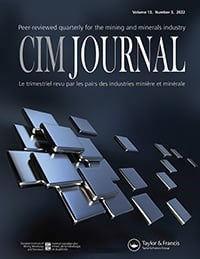

13, Issue 4, 2022)
J. Plavšić & I. Mišković
Published online: 21 Dec 2022
ABSTRACT
In recent years, digital twin (DT) technology has received much interest from the mining community. Despite the potential to revolutionize mining processes in the long-term, this technology is still nascent, and many companies are unsure how to leverage it for their industry-specific applications. For successful integration in the field and to meet user expectations, the roles, capabilities, and potential applications of this evolving technology need to be demystified. This paper provides an overview of industrial applications of DTs in the mining sector. To identify relevant industry examples, we performed a systematic search of electronic resources. Thirty-two real-life examples of early adopters in the field were analyzed based on the application purpose and classified into eight categories: (1) collaborative decision-making; (2) data analysis and visualization; (3) design; (4) management and coordination; (5) monitoring and maintenance; (6) operational efficiency and production; (7) optimization of the mine value chain; and (8) safety and reliability. It was found that application categories that provided immediate and profitable benefits for companies contained the most case studies. To the best of our knowledge, this is the first attempt to showcase the opportunities that DTs hold for the mining sector. This summary of state-of-the-art industry applications is the first step to demonstrate the opportunities of DTs for mining operations and support the development of this emerging field.
15 | MER Today– Fall 2023
Submit an article
Journal Homepage
MAINTENANCE,ENGINEERING& RELIABILITY

Digital technologies for energy efficiency and decarbonization in mining
O. Asa’d & M. Levesque
Published online: 15 Jun 2023
ABSTRACT
Several mining companies have set targets to decarbonize their operations by the year 2050. At the same time, there is pressure on the mining sector to increase the supply of minerals needed for clean energy technologies. Digital technologies such as automation, artificial intelligence, machine learning, and the Internet of Things are reshaping the way the mining sector works. This literature review identifies examples of current digital technologies implemented in mining operations and highlights their reported benefits. Although several benefits were reported, mining companies tend to focus on safety, productivity, and cost. Energy and greenhouse gas reductions are commonly overlooked, despite having the potential to shrink the mining carbon footprint. Quantifying the energy and greenhouse gas emission reductions achieved through implementation of digital technologies could strengthen the business case to enhance their adoption and help the mining sector reach decarbonization goals.
HEALTH &SAFETY
Control of friction hoist head rope tensions revisited
M. E. Greenway
Published online 06 Jun 2023
ABSTRACT
Matching of head ropes and drum grooves in multi-rope friction winding systems is essential for effective load sharing between the winding ropes. Analytical methods were developed in the 1960s to evaluate rope load disparity when rope groove depths are mismatched. Although this historical analysis ignored flexibility in rope groove lining materials, it is widely accepted that rope groove flexibility has the effect of reducing the disparity in load sharing. This paper recounts the original 1960s work in which rope load disparity was analyzed to provide rope groove depth tolerances of rigid grooves and provides a new rope groove depth tolerance for flexible grooves. Both rigid and flexible groove analyses show the importance of an adequate distance between the conveyance at its uppermost normal position in the shaft and the head ropes’ tangent point on the hoist drum. They also show that ground-mounted hoists are more tolerant to groove depth mismatch. Maintenance methods, including the collar-to-collar test, are revisited to reflect this latest analysis.
16 | MER Today– Fall 2023
Design method for overwind arrestors
 M. E. Greenway
M. E. Greenway
Published online: 08 Jun 2023

ABSTRACT
The relentless drive for safer winding systems has seen more serious consideration given to arresting systems in recent years. Design criteria have been debated. Arrestors are roughly selected based on average retardation rates and energy absorption capacity. Standards Australia sets criteria for design of arrestors that go beyond average retardation rates and energy absorption but provide little design guidance. Although sophisticated dynamic simulation methods have illuminated the true dynamic behavior of arresting systems, they are not available to most designers. Based on approximate dynamic models of conveyance arresting, this paper addresses the opportunity to equip the designer with computational tools that go beyond mere energy considerations but stop short of full dynamic simulation. Methods are presented to estimate the conveyance displacement, velocity, and acceleration in a headframe or shaft bottom arrestor. Equations for the approximate calculation of head rope forces during headframe arrest are included. A model of crash beam impact results in an approach to assessing whether head ropes fail if this occurs.
Latest articles
17 | MER Today– Fall 2023 HEALTH &SAFETY
CIM Journal
Jo-Anne Djivre
On June 11, 2023, the CIM MER Society executive proposed a donation of $250.00 to the Maison McCulloch Hospice in Sudbury in memory of Jo-Anne Djivre, who passed away on June 7th at the hospice. Jo-Anne was the wife of Marcel Djivre, a current member of the CIM MER Society executive.


Source of email: Mr. Dick McIvor Click
HERE for Obituary Link

18 | MER Today– Fall 2023
CIM MER Executive Committee 2022 - 2023

Chair, Martin Provencher
Immediate Past Chair, Dominique Privé
1st Vice Chair / Chair Elect, Lee Weitzel
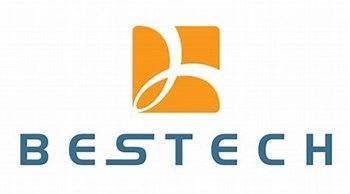

2nd Vice Chair, Vacant Treasurer, DickMcIvor
Directors:
(mdjivre@gmail.com)

Copy Editor: Janice M. Burke, MSc (jmburke@cim.org)






SOME CIM MER SOCIETY SUPPORTERS & PATRONS

19 | MER Today– Fall 2023






















 By Alice Martin, June 20, 2023
By Alice Martin, June 20, 2023












 M. E. Greenway
M. E. Greenway








